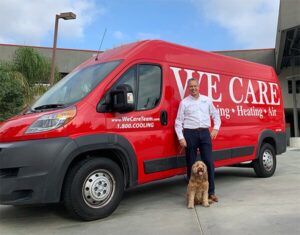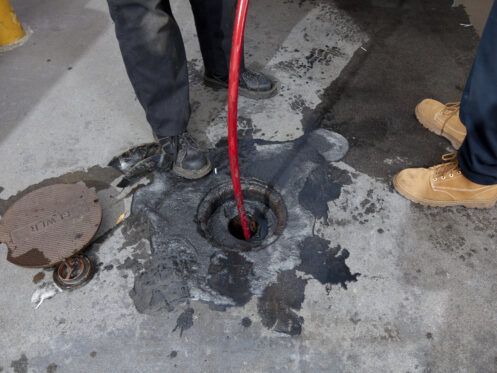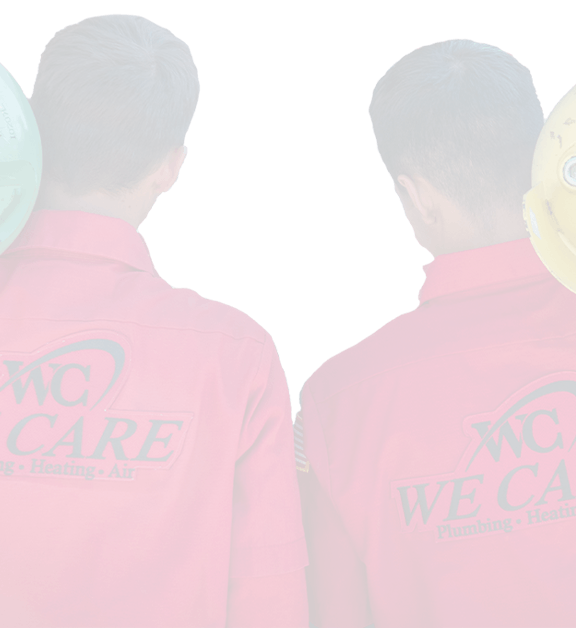A sewage backup is a common and severe household problem, which can lead to disastrous consequences. It is the most unpleasant and challenging problem that occurs in a home. Sewage backup results from various reasons, such as clogged or broken pipes, heavy rains, or a faulty septic system. It should not be taken lightly, as it can lead to severe infections and diseases. Exposure to sewage water can cause skin irritation, respiratory issues, and even life-threatening illnesses. Therefore, it is essential to tackle sewage backup as quickly as possible.
1. Turn Off the Water Supply and Electricity
When you detect sewage backup in your home, the first step is to shut off the water supply immediately. Sewage backup can cause massive water damage if it is ignored or delayed. Subsequently, turn off all the power supply sources in the affected area. This will prevent any electrical shocks and reduce the fire risk. At We Care Plumbing, Heating, & Air, we understand how stressful these sewage backup scenarios can be. We offer dependable Southern California residential and commercial plumbing, heating, and emergency services.
2. Evacuate the Affected Area
This step is crucial for the safety of you and those around you. Sewage water contains harmful bacteria and toxins that can pose serious health risks if you’re exposed for too long. Additionally, the foul odor can be overwhelming and can cause respiratory issues. So, it’s important to clear the area immediately if you notice any signs of sewage backup, such as slow-draining water, gurgling noises, or foul odors. Make sure to keep children and pets away and avoid any direct contact with the contaminated water. Safety should always be the top priority in situations like this.
3. Wear Protective Clothing
Sewage backup can be a messy and hazardous situation to deal with. You need to take proper precautions before attempting to resolve the issue. Make sure to wear the right protective clothing. This includes gloves, boots, and a mask or respirator. These items will help prevent contact with harmful bacteria and reduce the risk of illness. While sewage backup is not a pleasant experience, taking steps to protect yourself can make a huge difference in your safety and well-being.
4. Ventilate the Area
When it comes to dealing with sewage backup, proper ventilation is crucial. Give the affected area as much fresh air as possible to help dry out the moisture and prevent mold growth. This step may require opening windows or running fans to improve air circulation. And it’s important to avoid blockages that may prevent the room from airing out. To resolve sewage backup, proper ventilation makes for an important step toward a safer, healthier environment.
5. Remove Standing Water
When it comes to sewage backup, having standing water in your home can not only be unpleasant, but it can also be dangerous. This is why this step of our “What to Do” guide, removing the standing water, is so important. This may involve using a wet vacuum or pump to extract the water from your floors or other surfaces. It’s important to wear protective gear and avoid contact with the water, as it may be contaminated with harmful bacteria and viruses.
Once the water has been removed, thoroughly disinfect the affected area to prevent further health risks and damage. Remember, taking action quickly and safely can help to mitigate the effects of sewage backup and protect your home, household members, and health.
6. Disinfect the Area
When dealing with a sewage backup, disinfecting the affected area might be the most important step. Not only does it help remove any potentially harmful bacteria or germs, but it also gives you peace of mind knowing that your space is properly sanitized. However, it’s important to note that disinfection isn’t as simple as just spraying some bleach in the affected area and calling it a day.
Following proper procedures and guidelines is crucial to ensure that the disinfectant you use is effective and safe. Taking the extra time and effort to disinfect the affected area properly can save you from potential health hazards and prevent future problems with sewage backup.
7. Remove or Dispose of Contaminated Items
Remove any contaminated items. This includes anything that has come into contact with the sewage, such as carpets, furniture, and personal belongings. It may not be easy to part with expensive items or ones with sentimental value. Still, it’s better to err on the side of caution for the sake of health and safety. Wear protective gear, and properly dispose of any contaminated materials according to local guidelines. Taking this step seriously can help prevent the spread of dangerous bacteria and keep your property safe and clean.
8. Avoid Using Household Cleaning Products
Avoid using household products, as they can worsen the situation. These products may push the sewage further into your home or cause dangerous chemical reactions. Instead, it’s best to leave the cleaning to professionals with specialized equipment and cleaning solutions. By stepping back and resisting the urge to DIY, you’ll protect yourself and your home in the long run.
9. Call for Professional Help
Give the experts a call. Plumbers and water restoration specialists have the tools and expertise to handle the situation safely and effectively. Trying to handle the situation on your own can put you at risk of exposure to harmful bacteria and other hazardous materials. So, take a deep breath, pick up the phone, and let the pros handle everything. Knowing that your home is in good hands, you’ll have peace of mind.
10. Take Measures to Prevent Future Sewage Backup
After dealing with the mess and headache of a sewage backup, the last thing you want is for it to happen again. That’s why step 10 is crucial: taking measures to prevent future sewage backup. This could include anything from installing a backwater valve to regularly maintaining your plumbing system. Invest in these preventive measures to avoid the stress and expense of dealing with a sewage backup in the future.
Sewage backup is a severe household problem that needs immediate attention. That’s why following this “what to do” guide to a sewage backup is crucial. Taking quick action and implementing the proper cleaning and disinfecting process can limit the damage and the chances of severe health hazards. You also need to call for professional help as soon as possible. Taking preventive measures can save you from experiencing such distressing situations in the future.
At We Care Plumbing, Heating, & Air, we provide plumbing repair and maintenance, water treatment, sewer line services, AC replacement and repair, and heating services throughout South California. We also help with indoor air quality services in Murrieta, CA. We have products like air scrubbers that help eliminate these pesky particles causing harm in the air. Call us today for more information or to schedule an appointment.
Author Bio: Rusty Cochran
 Rusty Cochran is the President of We Care Plumbing, Heating and Air Conditioning. We Care began humbly, operating in his family’s living room. Under Rusty’s strong leadership, We Care has grown from 2 employees to over 200 employees. We Care Plumbing, Heating and Air has gained recognition across the HVAC industry, receiving numerous awards and certifications, including being named the ACCA Contractor of the Year, The Map Presidential Award several times, Angie’s List Super Service Award, NATE certification, and multiple Dave Lennox Awards. LinkedIn Profile
Rusty Cochran is the President of We Care Plumbing, Heating and Air Conditioning. We Care began humbly, operating in his family’s living room. Under Rusty’s strong leadership, We Care has grown from 2 employees to over 200 employees. We Care Plumbing, Heating and Air has gained recognition across the HVAC industry, receiving numerous awards and certifications, including being named the ACCA Contractor of the Year, The Map Presidential Award several times, Angie’s List Super Service Award, NATE certification, and multiple Dave Lennox Awards. LinkedIn Profile







